
Some edible flowers pack a big ornamental punch in the garden and an equally large flavor punch in the kitchen. These include the blooms of a few traditional garden annuals as well as the flowers of some lesser-known ornamental herbs that should be a mainstay in any edible ornamental garden. Add them to salads, flavorful herbal butter, and vegetable dishes to provide an impressive flourish to your cooking.
Herbal Edible Flowers
There are lots of herbs that double up as garden flowers and garden flowers with herbal qualities. Here are some of the best.
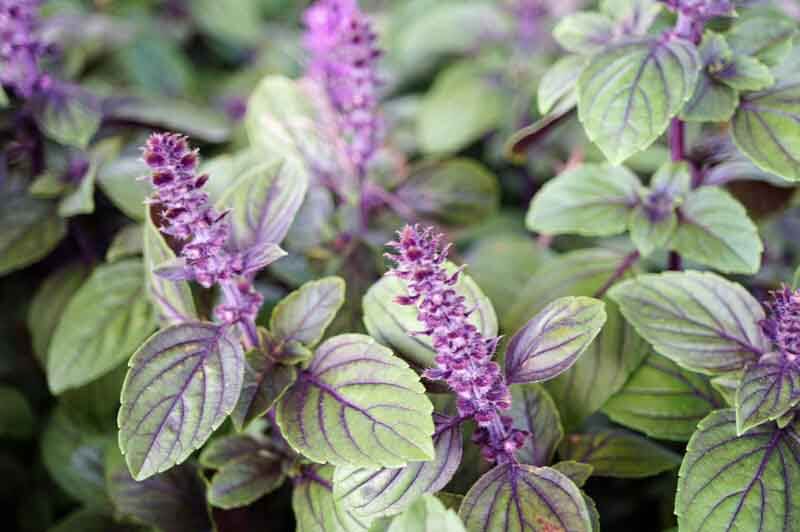
African Blue Basil (Ocimum ‘African Blue’, 18 to 24 inches) is likely the most beautiful garden basil of them all. Plant it as an ornamental annual for its purplish leaves and copious spikes of attractive lavender-pink flowers that just keep coming. Bees love them, too. Pick a stem of flowers to top off pasta dishes, salads, and vegetables. Pinch back spent flower stems to keep more coming. Its leaves also made a punchy pesto.
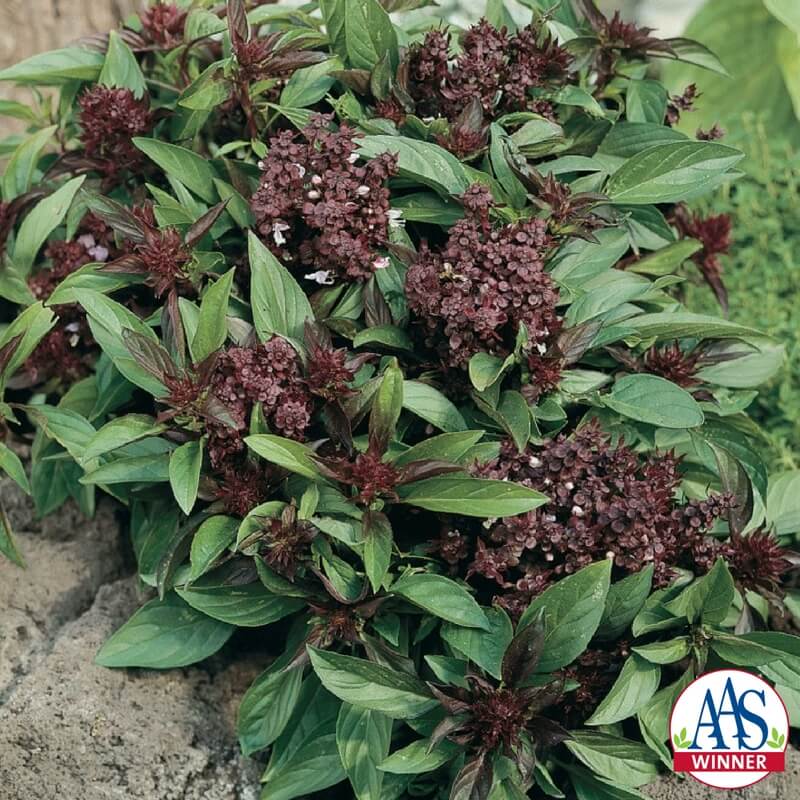
Gardeners that love Thai food should not be without the award-winning annual Siam Queen basil (Ocimum basilicum ‘Siam Queen’, 12-18 inches). It is one of those plants that never disappoints. Not only do its leaves and flowers have a strong clove and anisette-like flavor ideal for Thai cooking, but its equally edible clusters of purplish-maroon flowers bloom nonstop and the plant thrives in the heat.
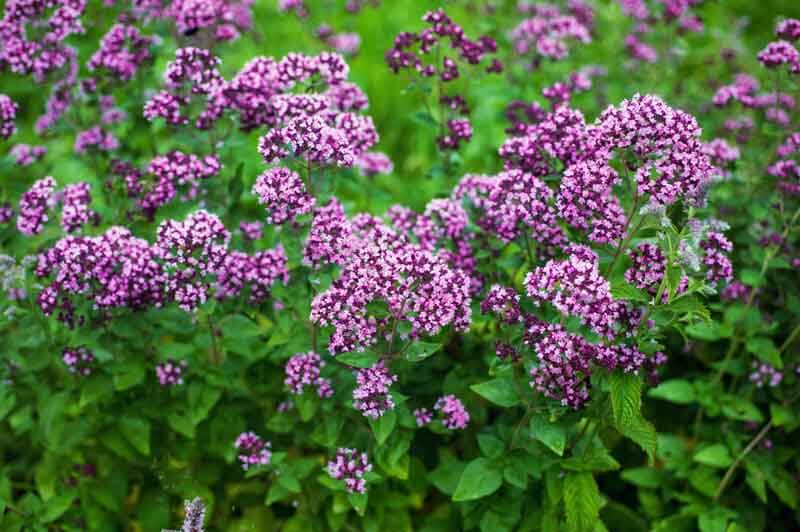
There are many ornamental oreganos, but Herrenhausen oregano (Origanum laevigatum ‘Herrenhausen’, USDA Hardiness Zones 6-9) is a classic perennial that reaches 18-24 inches and produces flushes of rosy-purple flowers in summer that the bees cannot resist. The aromatic flowers are also very flavorful and impart a sweet oregano flavor.
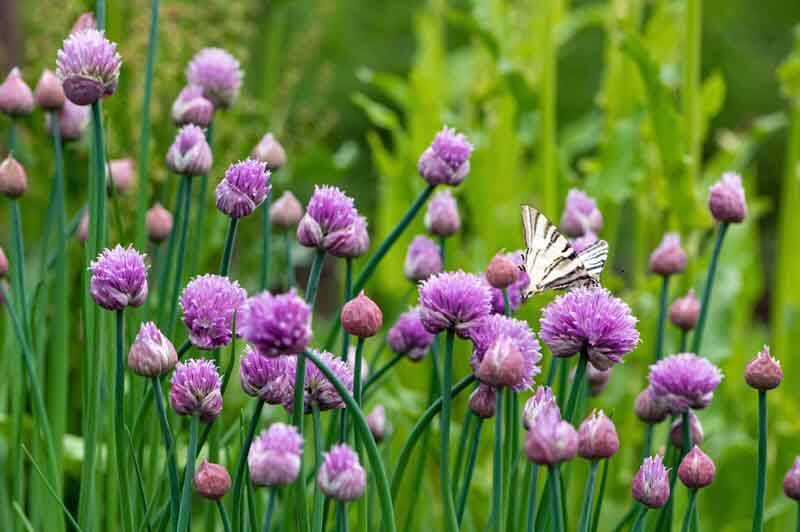
Chives (Allium schoenoprasum, Zones 3-9) are spring bloomers with some of the tastiest and prettiest mauve flowers that lend a gentle kick of onion to salads and vegetable dishes. The perennial herb looks lush in spring, tapers off in summer, and then provides a flush of fresh chive leaves again in fall.
When in full bloom, annual Signet marigolds (Tagetes tenuifolia, 12-18 inches) create a mound of bright color and their little petals have a pungent, somewhat citrusy flavor that lends good taste to heirloom tomato salads and other festive summer vegetable dishes.
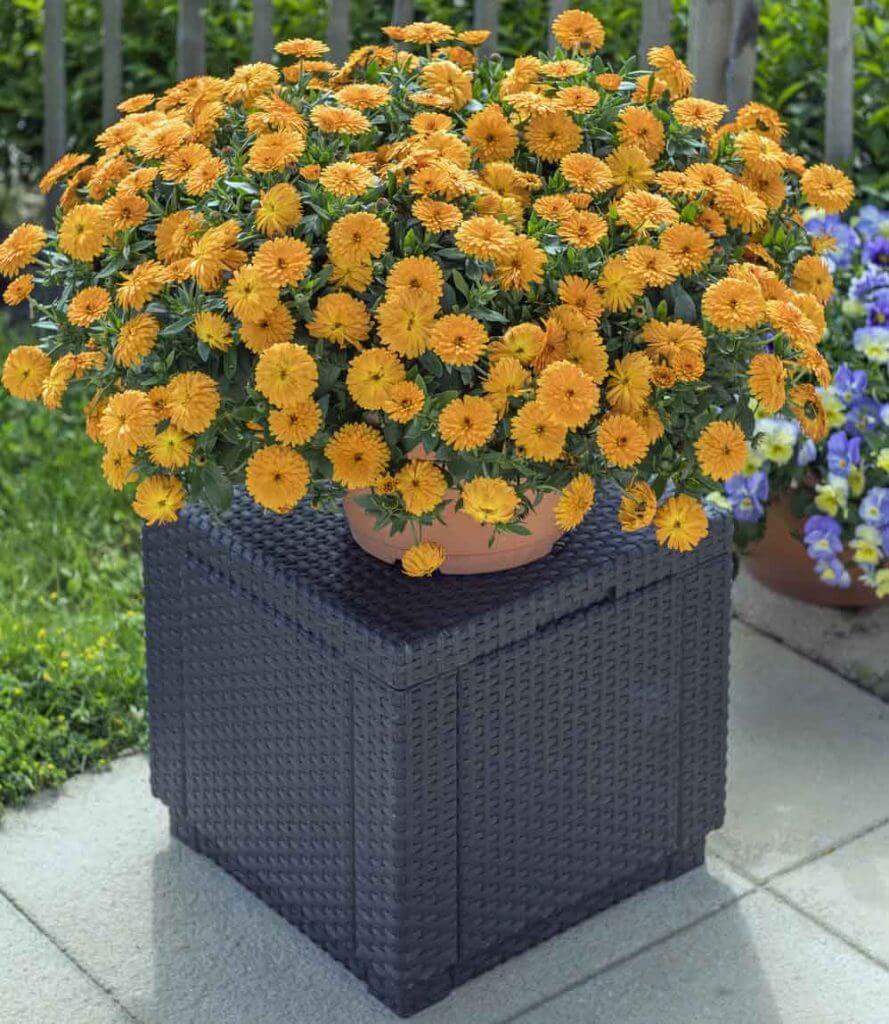
Pot Marigold (Calendula officinalis) is a cheerful, cool weather annual that has flowers in warm colors. Its petals have a spicy flavor that lends interest to salads. You can also dry them to make herbal tea. Normally, the plants start to decline as they set seed, but the Proven Winners® variety Lady Godiva® Orange does not set seed, so it blooms nonstop and creates a spectacular specimen plant with tasty petals.
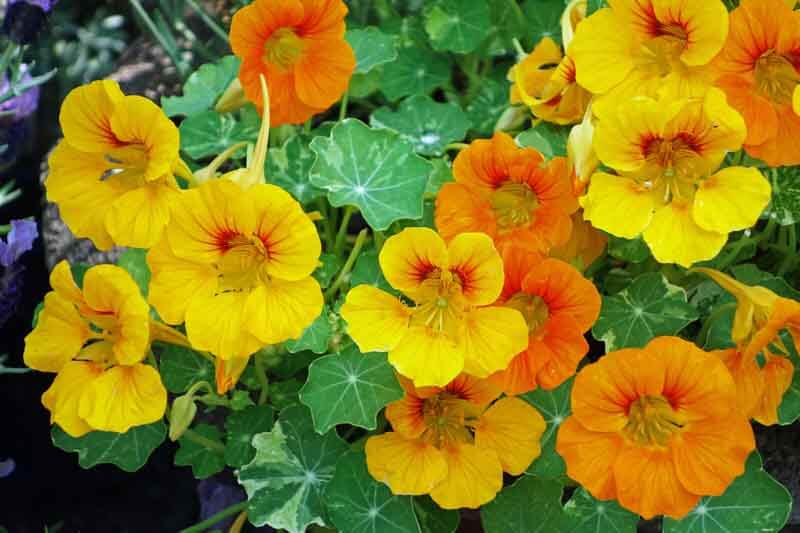
Summer blooming nasturtiums (Tropaeolum majus) have beautiful flowers of orange, gold, pink, and red with a peppery taste like watercress. The plants grow as vines or compact specimens. There are many beautiful varieties available. Those in the Whirlybird Mix are compact, come in all colors, are easy to grow, and just the right size for pots. Those in the Alaska series are equally compact and pretty but their leaves are variegated. If you’re more interested in a large, vining variety, try ‘Empress of India‘. The 1889 heirloom has blue-green leaves and deepest orange flowers. Add the blooms to salads or to decorate a savory summer cocktail, like a bloody Mary.
Growing Edible Flowers

The beauty of growing these edible flowers is that all of them are very easy to successfully cultivate, and their growing needs are largely the same. Grow them in full sun and provide quality garden soil with good drainage and average soil moisture. The addition of Fafard Premium Natural & Organic Compost will improve overall performance. A granular fertilizer formulated for flowering is also recommended. If planting them in containers, choose large containers spacious enough to accommodate the plants, and fill them with Fafard® Ultra Container Mix with Extended Feed. Then harvest and enjoy your edible flowers through the season.

